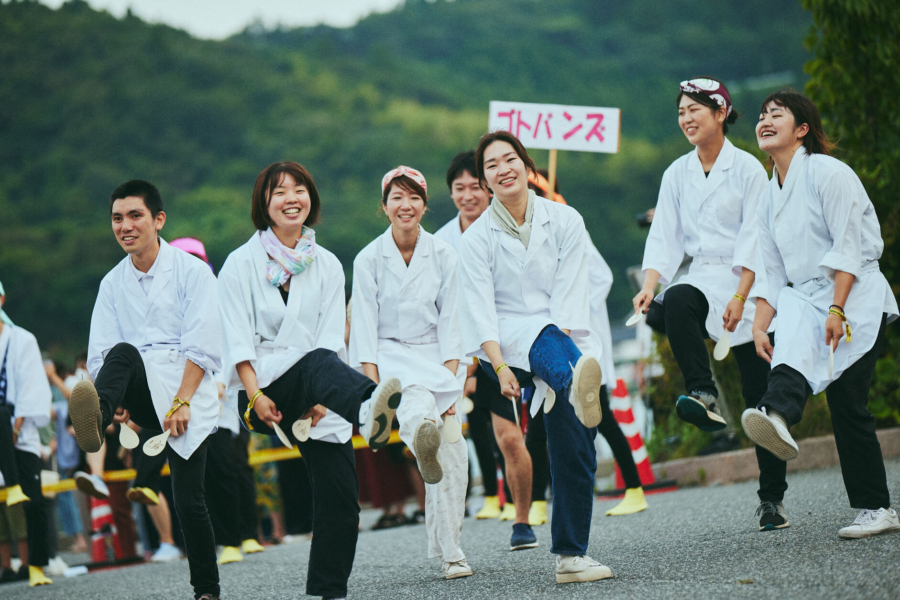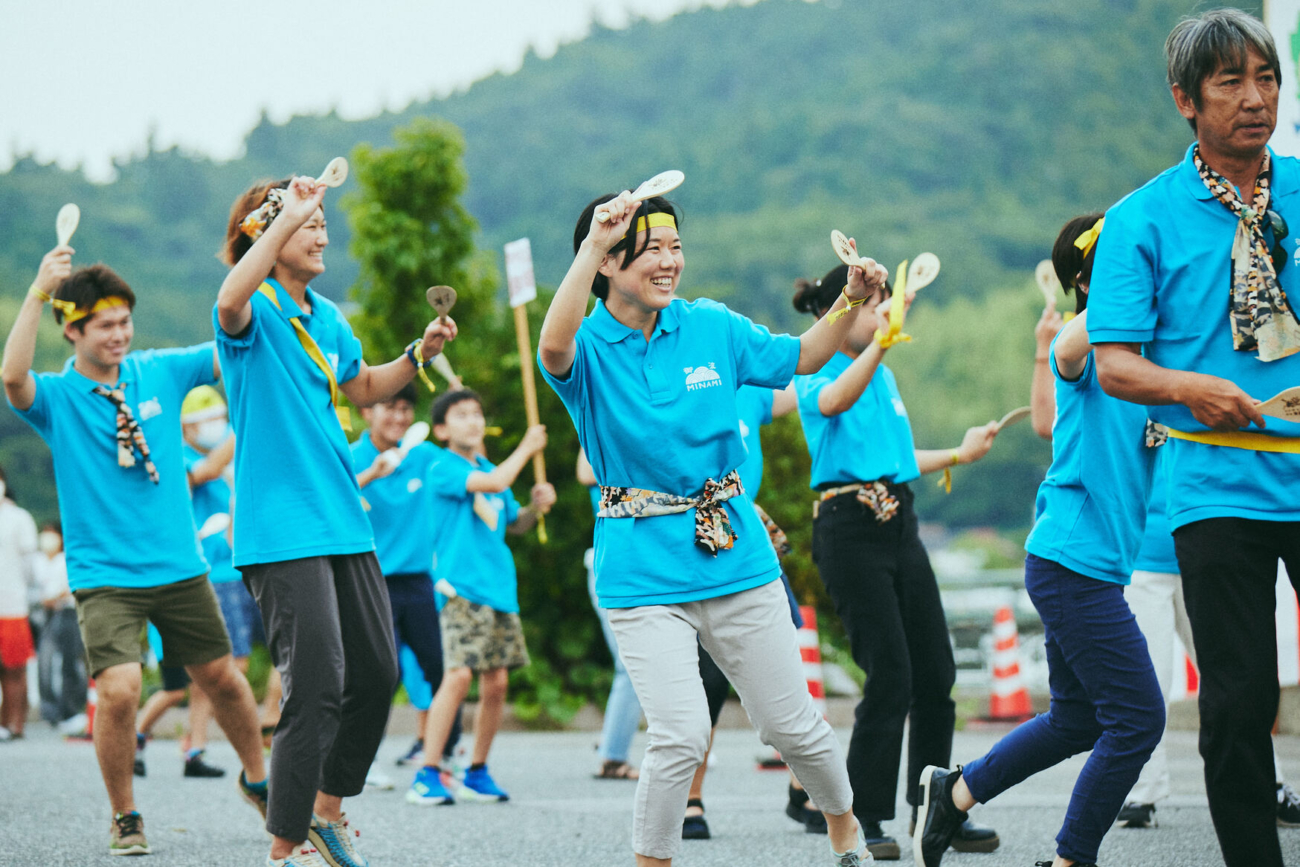Introduction
Oki-wa e no shima goes the tune pouring from speakers as the ferry nears Saigo Port in Okinoshima Town. Kiyo ga kiorya kinnya monnya, it picks up when Hishiura Port, Ama Town, is in sight, then changes to a more contemporary melody at Beppu Port, Nishinoshima Town. Okyaku meguminara, it intones again, rousing from a nap the travellers bound for Kurii Port, Chibu Village.
Like that, arrival to the Oki Islands happens to the soundtrack of folk songs. The four featured scores are representative of each of the islands, but by no means are they an exhaustive list of songs passed down by the islanders. To this day, as many as one hundred pieces are performed through Oki, though surprisingly, all of them originated elsewhere.
So how did they become such a pivotal part of the local culture?
Let’s discover all the connections with folk songs and the Oki Islands at the centre, starting with the kitamaebune trading ships.
Kitamaebune trading ships
 It is the name of the ships that carried and traded goods from the 18th to the mid-19th century. They set off from Osaka, travelled south through Setonaikai Inland Sea, crossed Kanmon Strait by Shimonoseki, and then proceeded along the east coast of Honshu to Hokkaido. Outbound, they were filled with products from the city, exchanged halfway through the journey for commodities in demand up north—rice grains and other products. Inbound, they brought back huge shipments of herring. And be it their way there or back again, kitamaebune trading ships would make numerous stops en route in the ports-of-call to reload-slash-sell cargo, wait out bad weather, or both. Some of these ports were located on the Oki Islands.
It is the name of the ships that carried and traded goods from the 18th to the mid-19th century. They set off from Osaka, travelled south through Setonaikai Inland Sea, crossed Kanmon Strait by Shimonoseki, and then proceeded along the east coast of Honshu to Hokkaido. Outbound, they were filled with products from the city, exchanged halfway through the journey for commodities in demand up north—rice grains and other products. Inbound, they brought back huge shipments of herring. And be it their way there or back again, kitamaebune trading ships would make numerous stops en route in the ports-of-call to reload-slash-sell cargo, wait out bad weather, or both. Some of these ports were located on the Oki Islands.
After a long day’s work at the docks or stuck at the port as the Sea of Japan raged with storms, a crew would hop off their kitamaebune trading ship to party with the locals. Conversations were lively, and alcohol probably flowed freely, so soon enough sailors would be singing folk songs. Some pieces surely hailed from their respective hometowns, while others could have been earworms first heard in a port-of-call elsewhere. Just listening in on their merriment, curious islanders would thus amass quite a repertoire with pieces native to many different regions of Japan. They would later put their spin on them, adapting the lyrics and developing dances to accompany the music, then pass them down to their children.
…And that is how on the backdrop of herring shipments to Osaka, folk songs from all over Japan have reached the Oki Islands.
But the original query still stands:
What about the textile industry?
In a nutshell? It saw development.
Sacrificing brevity for a more detailed picture—fruits of labour in the Japanese textile industry weren’t exclusively clothes. No, they also included sails used in kitamaebune trading ships, though their quality was hardly satisfactory. Woven with straw and rush, they were no match for the capricious weather in the Sea of Japan, forcing crews to travel painstakingly slow and close to the coastline, able to complete only one round trip to Hokkaido per year.
Enter Kuraku Matsuemon (1743–1812), an inventor native to the present-day Hyōgo Prefecture. In 1785, eager to improve the efficiency of maritime transportation, he devised a new way to produce sails. The result was a durable product made with thick cotton. From the sailors’ perspective, this development was nothing short of groundbreaking, as they were now able to travel faster, covering greater distances further away from the coastline. Two round trips to Hokkaido a year were suddenly possible.
What did that mean for the Oki Islands? In some years after 1785, as many as 4,500 vessels would anchor at the ports of call here, intensifying the transfer of information and culture—including folk songs. On a side note, kitamaebune trading ships would also promptly introduce the islanders to novelties at that time not commonly seen outside the big cities like Osaka. Lafcadio Hearn (1850–1904), a writer who popularised Japanese folklore in the West, notably mentioned his surprise at the European cuisine served in Saigō Port, Okinoshima Town.
From all over Japan

As mentioned above, the folk songs introduced to the Oki Islands by kitamaebune trading ships hailed from all over the country. Just to name a few: “Oki Shigesa-bushi” (the one that goes Oki-wa e no shima) is a melody from Niigata Prefecture, “Kinnya Monnya” (the one that intones Kiyo ga kiorya kinnya monnya) has roots in Kumamoto Prefecture, while “Oki Dossari-bushi” (with the opening line of Okyaku meguminara) echoed through the docks when cargo was being loaded on the kitamaebune ships in Osaka. The list goes on, of course. This diverse repertoire the islanders have amassed includes even scores already half-forgotten in their place of origin.
For those reasons, some call the Oki Islands a treasury of folk songs.
Back to the present
So, other than on a ferry with the islands on the horizon, how can we enjoy Oki folk songs today?
Local festivals are one of the best ways. On the second Saturday of May, Saigō Port area in Okinoshima Town hosts Shigesa-odori Parade. “Oki shigesa-bushi” plays on the loop, as locals and visitors take to the main street, two small plates in each hand, to dance the afternoon away. Then, in August, Ama Town holds Kinnya Monnya Festival, featuring the folk song of the same name. Since the accompanying dance is performed with a rice paddle, not plates, that is what the dancers are holding, when joining the parade.
Alternatively, the purchase of CDs with recorded performances at a souvenir shop is an option available all year round. Playing one back home, let’s sit back and reflect for a moment on how the (seemingly) unlikely connections between the textile industry, folk songs, herring and Osaka beautifully come together in the Oki Islands.
Author: Izabela Raczynska

